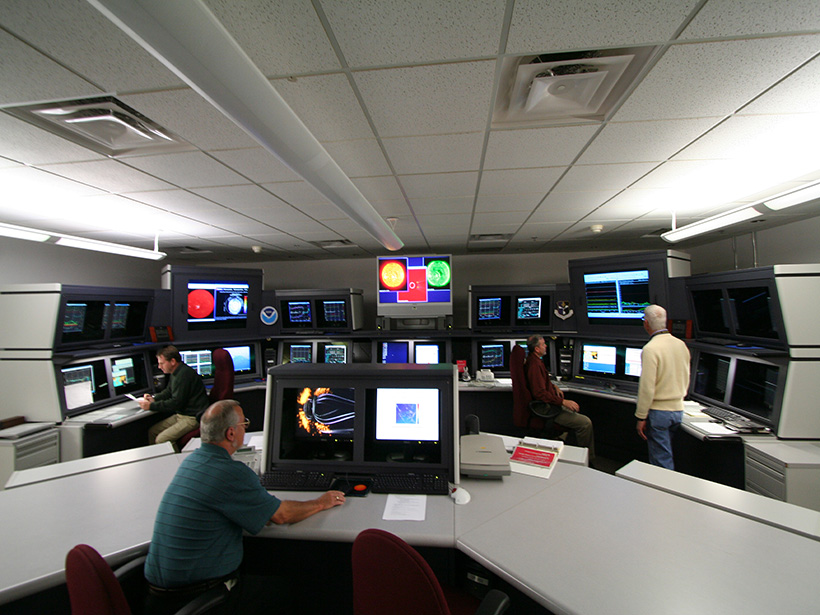The Space Weather Enterprise Forum has been held almost yearly since 2009 and began as a medium for government agencies and academia to educate and inform a broad range of space weather users, policy makers, and decision makers on the importance of space weather preparedness. This year’s forum marked a turning point when those same users and policy and decision makers took the podium to highlight their efforts over the past year to formulate a national policy and provide support for that policy in the form of agency funding.
Keynote speaker Senator Gary Peters opened the forum by presenting the perspective from Congress. The Senator spoke of a recent visit to NASA’s Goddard Space Flight Center where he gained a better understanding of space weather impacts and the urgency of the work that agencies undertake to mitigate this potential hazard. Noting that a “strong national defense includes a defense of our planet from natural hazards”, Senator Peters stressed that more work is needed from the space weather community to raise awareness of “this difficult and extremely important problem.”
Space weather happens every day. An extreme event however, can change our country and can change our world.
Two days of robust panel discussions provided a diverse audience of ~200 attendees with an overview of space weather and its effects (e.g., solar flares, coronal mass ejections, and geomagnetic storms), and the many ways those effects complicate everyday activities on Earth. A highlight of the forum was the announcement of the National Space Weather Strategy by the interagency Space Weather Operations, Research, and Mitigation (SWORM) task force. Several task force members, spoke of the strategic goals and the specific implementation activities within their agencies. Chartered by the Executive Office of the President’s National Science and Technology Council, the Strategy is intended to be an “all-community” plan that engages all involved — the agencies, industries, academia, and the public — toward greater preparedness. Bill Murtagh, Assistant Director for Space Weather at the White House Office of Science and Technology Policy (OSTP), expressed the administration’s urgency by noting “Space weather happens every day. An extreme event however, can change our country and can change our world.”
In another sign of the forum’s progress, an industry group served as a Session Coordinator for the first time with Dr. Devrie Intriligator representing the American Commercial Space Weather Association (ACSWA). Formed in 2010, ACSWA “is an association of companies that promotes space weather risk mitigation for critical national infrastructure related to national daily life, economic strength, and national security”. Dr. Intriligator highlighted growing capabilities of space weather companies and emphasized the “need for true partnering between government and the commercial sector to make progress on this national call to action.”
The forum closed with progress reports from member agencies. Representatives expressed their support for the national strategy and discussed potential challenges. All echoed the keynote message for increased communication to our stakeholders and, more importantly, to the public as to how they may better prepare.
Learn More about Space Weather
- Read the OSTP fact sheet, New Actions to Enhance National Space-Weather Preparedness.
- Watch a USGS video on Geomagnetic Hazards.
- Get real time space weather conditions from NOAA’s Space Weather Prediction Center.
- Explore AGU’s new special collection, Geomagnetically Induced Currents: Commentary and Research.
—Barbara Giles, Editor, Space Weather; email: [email protected]
Citation:
Giles, B. (2015), Annual SWEF raises awareness across the space weather enterprise, Eos, 96, https://doi.org/10.1029/2018EO040713. Published on 04 December 2015.
Text © 2015. The authors. CC BY-NC-ND 3.0
Except where otherwise noted, images are subject to copyright. Any reuse without express permission from the copyright owner is prohibited.

